Un Susto En La Carretera [Esp-Eng] A Scare On The Road

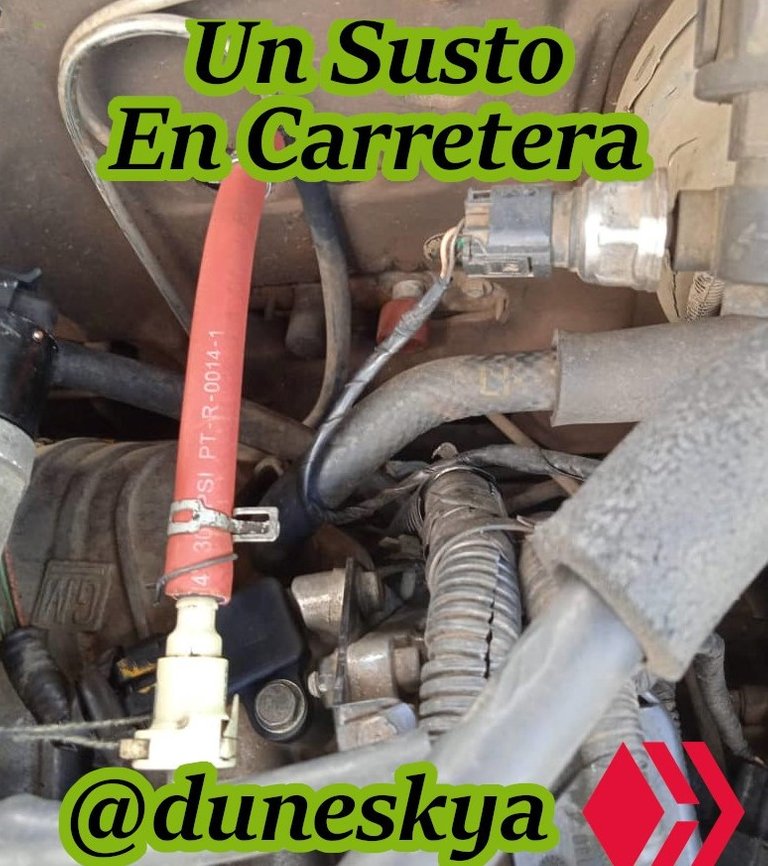
Un Susto En La Carretera
Versión Español
Saludos amigos de HIVE, hoy les voy a contar el gran susto que viví recientemente mientras me encontraba realizando un viaje familiar, de igual manera les explicare el procedimiento empleado en el reemplazo de la manguera de combustible.
En mi familia siempre se ha dicho que la persona que anda en carro tiene que siempre chequearlo y mantenerlo en óptimas condiciones, y más si se tiene pensado hacer un viaje, así sea corto el viaje igual hay que tener precaución.
Un día como muchos otros, mi familia y yo nos dispusimos a realizar un viaje desde la ciudad de Anaco (Venezuela) hasta la ciudad de Puerto La Cruz (Venezuela), este es un viaje relativamente corto, ya que tan solo tiene 103 km de recorrido, que se puede hacer en un tiempo estimado de 1 Hr 30 min.
Como de costumbre, antes de emprender el viaje, realizamos nuestro chequeo de rutina al carro, según nosotros todo estaba bien; y en realidad todo marchaba bien, pero la situación cambio al pasar 1 Hr. de recorrido, y es que de repente mientras el carro iba en marcha logramos percibir un fuerte olor a Gasolina, en un principio asumimos que era un olor que estaba en el ambiente sin darle mucha importancia, opinión que tuvimos que cambiar al seguir nuestro recorrido ya que el olor no se quitaba.
Nos vimos motivados a estacionarnos a un lado de la carretera, al levantar el capó del carro se logró ver un gran chorro de Gasolina, este salía de la manguera que inyecta el combustible que va al cuerpo de aceleración del motor, de inmediato nos alarmamos en primera instancia porque esa gasolina que se estaba derramando podía causar un incendio ya que había alta temperaturas, cosas que logramos evitar apagando de forma inmediata el carro.
Al pasar el rato surgió un nuevo susto, y es que el estar en plena carretera, la cual no posee vivienda cercana, nos limitaba el tener coberturas en los teléfonos móviles así como también nos ponía el limite en el acceso a repuestos de forma inmediata, pero estos no fueron los verdaderos sustos, el susto mas grande se hizo presente cuando se detuvo un carro para auxiliarnos, de forma instantánea nos invadió la desconfianza, pero no nos quedaba de otra que recibir la ayuda, un señor descendió del carro y luego de saludar sus siguientes palabras fueron: “Traten de arreglar el carro rápido que en esta zona hay muchos delincuentes”, eso fue como una bomba que nos cayó.
De forma rápida, comenzamos a improvisar la reparación, estábamos ya resolviendo cuando pasó otro carro y en plena marcha gritaron: “muévanse de allí, que los van a robar!!!”, eso fue el detonante del pánico, nos apresuramos mas y a toda velocidad logramos la reparación, y pensar que todo se motivo por una manguera que lucia en perfecto estado, pero ya tenia cierto tiempo sin haber sido reemplazada.
A manera de contribución con esta gran comunidad les indicare como se logró reemplazar la manguera que surte de combustible al cuerpo de aceleración del motor.
Los materiales utilizados fueron pocos, tan solo 01 destornillador plano, 01 pinza, 01 cuchillo o navaja, 02 abrazaderas de metal y 01 manguera de ¼ de diámetro.

Procedimiento empleado en la sustitución de la manguera de combustible:
01.Utilizando el destornillador plano, se procedió a aflojar la abrazadera que sujeta el purificador de aire, de igual manera utilizando la pinza se retiro otra abrazadera que tiene dicho purificador.
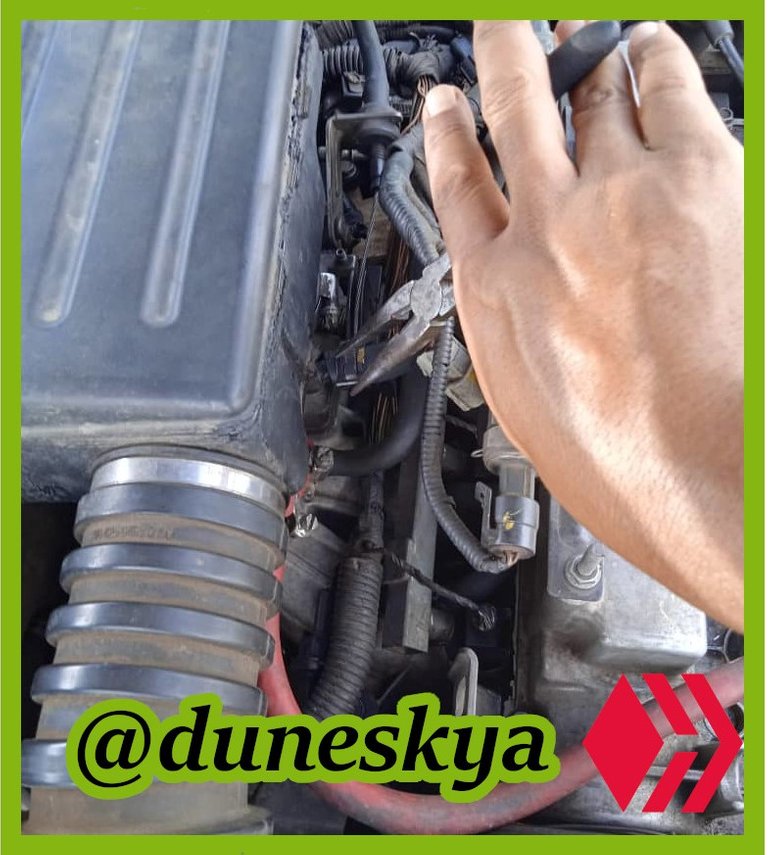
02.Luego se aparto el purificador para tener mas espacio y un mejor alcance a la manguera de combustible.
03.Haciendo uso de la pinza se logro quitar las abrazaderas que aprietan la manguera, luego con mucho cuidado se retiro un clic que sujeta al conector que esta en el cuerpo de aceleración.
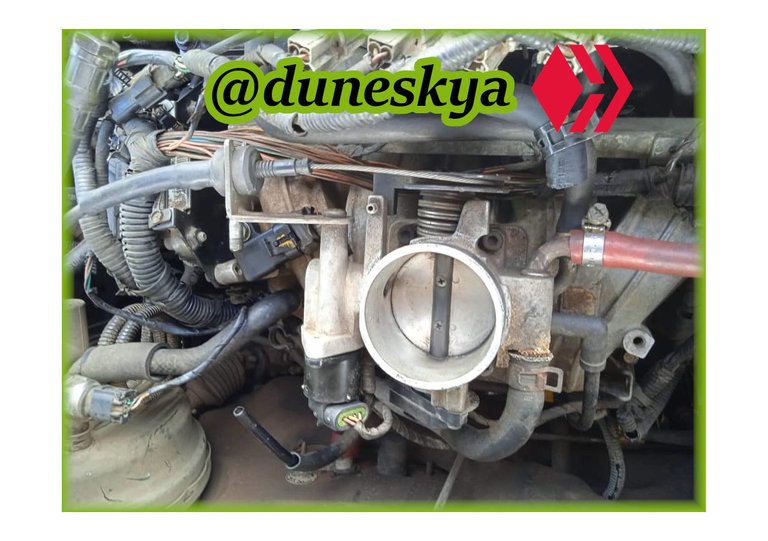
04.Aplicando fuerza se introdujo el conector en la nueva manguera que tiene un diámetro de ¼, este tiene que entrar ajustado ya que es necesario que entre así para evitar fuga de combustible, luego en el extremo se coloca la abrazadera de metal que le daría una mayor seguridad.
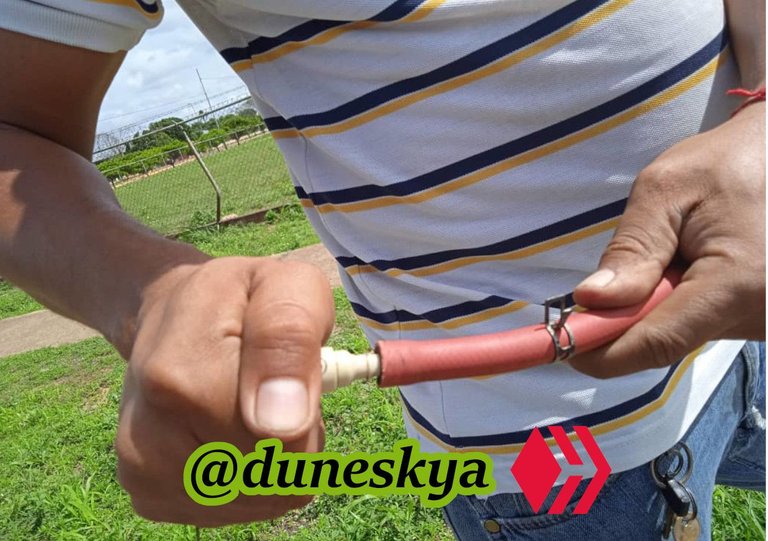
05.Se procede a insertar por el otro extremo la manguera en la tubería que viene desde el tanque de combustible hasta el motor, una vez introducida la manguera se coloca la abrazadera de metal.
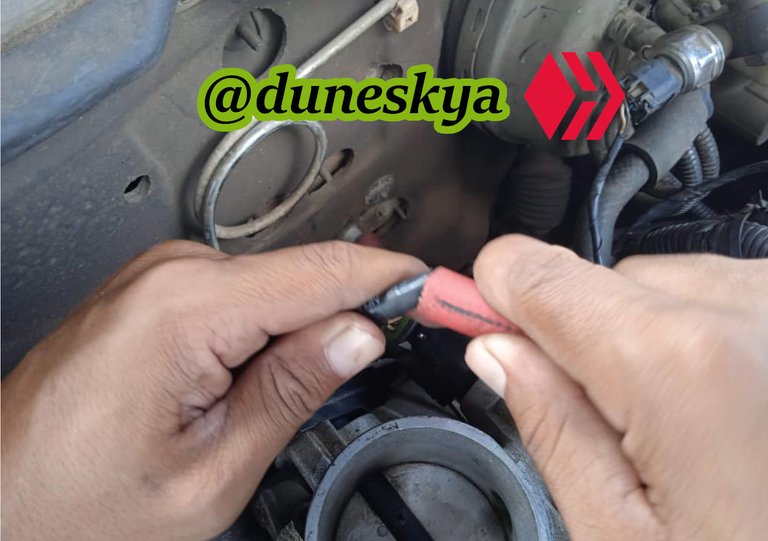
06.Se introduce el conector en el cuerpo de aceleración y luego se le coloca el clic de seguridad.
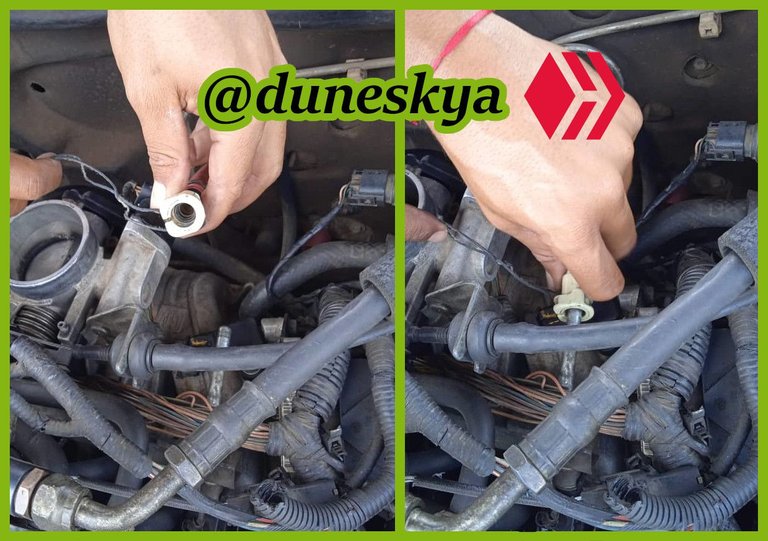
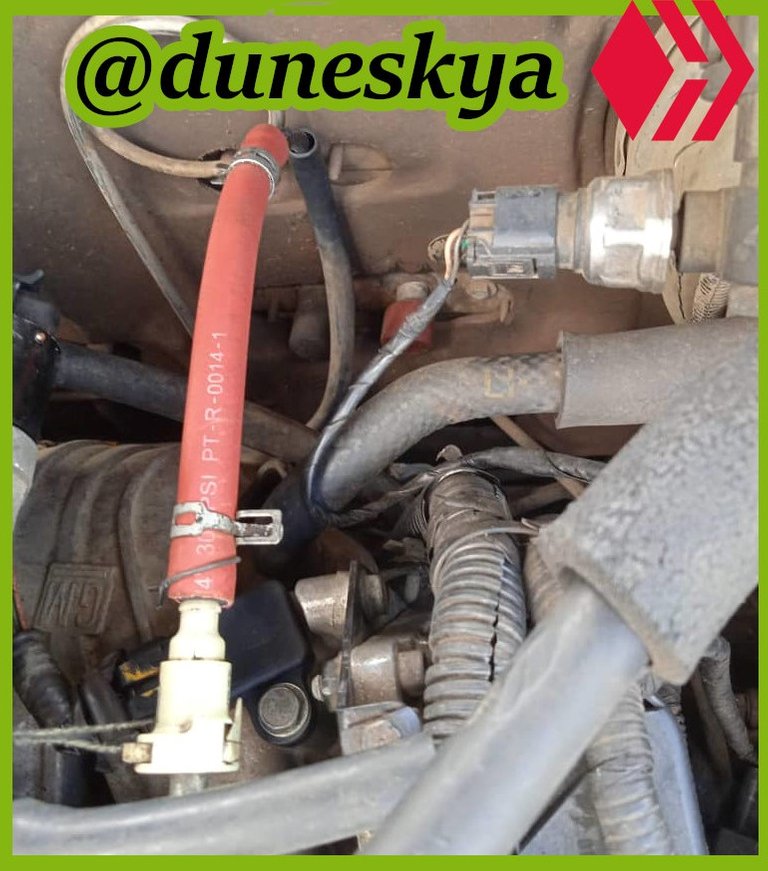
07.Se coloca nuevamente el purificador de aire.
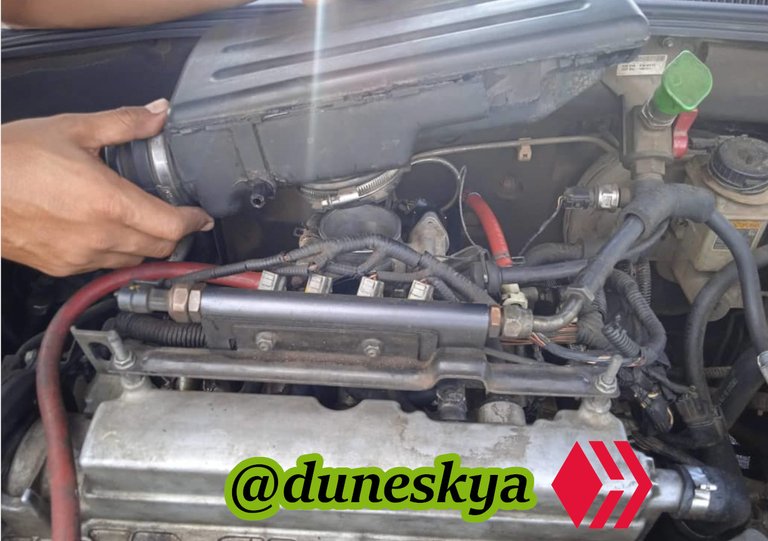
08.Utilizando el destornillador plano, se apretó la abrazadera que sujeta el purificador de aire y con la pinza se coloco la abrazadera que tiene a un lado el purificador de aire.
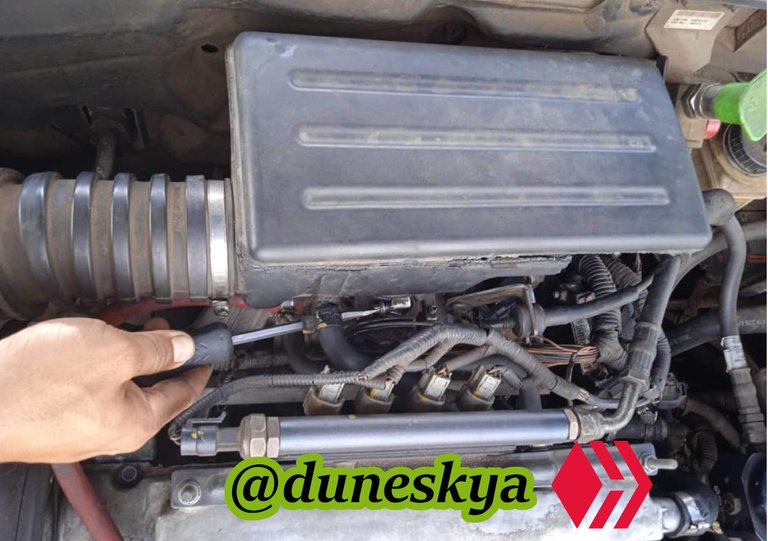
Agradeciéndoles su tiempo empleado para leer mi contenido, me despido hasta una próxima oportunidad amigos de HIVE.
Fotos de mi propiedad, modificadas con el editor de imágenes GIMP.


A Scare On The Road
English Version
Greetings friends of HIVE, today I am going to tell you about the great scare that I recently experienced while I was on a family trip, I will also explain the procedure used in the replacement of the fuel hose.
In my family it has always been said that the person who rides in a car must always check it and keep it in good condition, especially if you plan to make a trip, even if it is a short trip, you still have to be careful.
One day like many others, my family and I set out to make a trip from the city of Anaco (Venezuela) to the city of Puerto La Cruz (Venezuela), this is a relatively short trip, since it is only 103 km long, which can be done in an estimated time of 1 Hr 30 min.
As usual, before starting the trip, we made our routine check of the car, according to us everything was fine; and in fact everything was going well, but the situation changed after 1 Hr. of travel, and is that suddenly while the car was running we could perceive a strong smell of gasoline, at first we assumed it was a smell that was in the environment without giving much importance, opinion that we had to change to continue our journey as the smell was not removed.
We were motivated to park on the side of the road, when we lifted the hood of the car we could see a large jet of gasoline, this was coming out of the hose that injects the fuel that goes to the throttle body of the engine, immediately we were alarmed in the first instance because the gasoline that was spilling could cause a fire as there were high temperatures, things that we managed to avoid immediately turning off the car.
After a while a new scare arose, being in the middle of the road, which has no nearby housing, limited us to have coverage on cell phones and also put us the limit on access to spare parts immediately, but these were not the real scares, the biggest scare was present when a car stopped to help us, instantly we were overcome with distrust, but we had no choice but to receive help, a man got out of the car and after greeting his next words were: "Try to fix the car quickly because in this area there are many criminals", that was like a bomb that fell on us.
Quickly, we began to improvise the repair, we were already solving the problem when another car passed by and in full speed they shouted: "move from there, they are going to rob you!!!", that was the trigger of panic, we hurried more and at full speed we made the repair, and to think that everything was caused by a hose that looked in perfect condition, but had some time without having been replaced.
As a contribution to this great community I will tell you how we managed to replace the hose that supplies fuel to the throttle body of the engine.
The materials used were few, only 01 flat screwdriver, 01 pliers, 01 knife or razor, 02 metal clamps and 01 ¼ diameter hose.

Procedure used in the replacement of the fuel hose:
01.Using the flat screwdriver, we proceeded to loosen the clamp that holds the air purifier, in the same way using the pliers we removed another clamp that has said purifier.

02.Then the purifier was moved aside to have more space and a better reach to the fuel hose.
Making use of the pliers I managed to remove the clamps that tighten the hose, then carefully removed a click that holds the connector that is in the throttle body.

04.Applying force the connector was introduced into the new hose that has a diameter of ¼, this has to enter tight as it is necessary to enter well to avoid fuel leakage, then at the end is placed the metal clamp that would give greater security.

05.Proceed to insert the other end of the hose in the pipe that comes from the fuel tank to the engine, once the hose is inserted the metal clamp is placed.

06.The connector is inserted into the throttle body and then the safety click is placed.


07.The air cleaner is placed again.

08.Using the flat screwdriver, the clamp that holds the air purifier was tightened and with the tweezers the clamp that has the air purifier on one side was placed.

Thanking you for your time spent to read my content, I say goodbye until next time friends of HIVE.
Photos of my property, modified with the image editor GIMP.
Translated with www.DeepL.com/Translator (free version)
Hola, bueno me alegra que hayan solucionado rápido lo de la manguera, fuiste muy valiente al tomarte el tiempo para sacar esas fotos en esa carretera, ya que es peligrosa. Yo también me he quedado accidentado en esa vía ya que soy del Tigre.
Si amigo ! Aproveché la oportunidad de que no era yo la que estaba haciendo la reparación y capture el momento con mucha precaución, para compartirla con ustedes !
Que bueno que solo fue un susto :-)
Que bueno que son precavidos y llevaban una manguera de alta presión con ustedes, a eso se le llama solucionar.
hola, este tipo de fallas salen de la nada, solo hay que tener un poco de suerte de conseguir las piezas rápidamente y así corregir la falla.